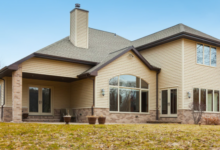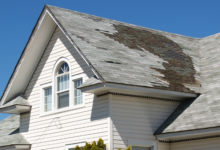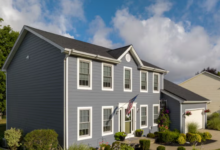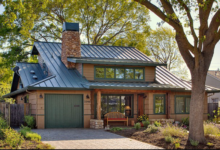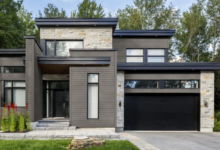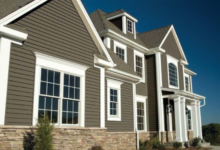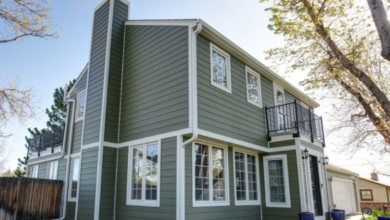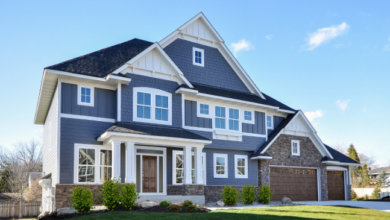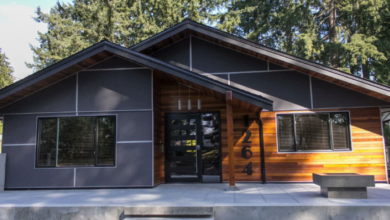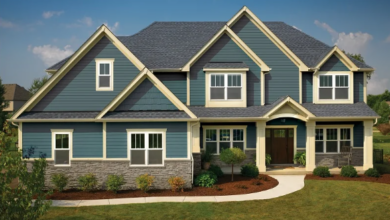Siding Installation Financing Options | Flexible Payment Plans
Siding Installation Financing Options – Discover top financing options for siding installation projects. Learn about benefits, compare plans, and find flexible payment solutions to enhance your home’s exterior.
Affordable Siding Installation Financing Options: Enhance Your Home Today!
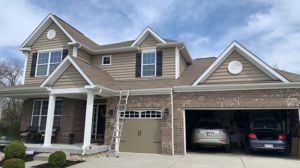
Upgrading your home’s exterior with new siding can significantly boost its curb appeal and value. However, the upfront costs can be a concern for many homeowners. Fortunately, various financing options are available to make siding installation more affordable. In this comprehensive guide, we’ll explore these options, their benefits, and provide real-world examples to help you make an informed decision.
Why Consider Financing for Siding Installation?
Investing in new siding offers numerous advantages:
- Enhanced Aesthetic Appeal: Fresh siding revitalizes your home’s appearance, making it more attractive.
- Increased Property Value: Quality siding can boost your home’s market value.
- Improved Energy Efficiency: Modern siding materials offer better insulation, reducing energy bills.
- Protection Against Elements: Durable siding shields your home from weather-related damages.
Despite these benefits, the initial investment can be substantial. Financing allows you to spread the cost over time, making it more manageable.
Top Siding Installation Financing Options
Here are some popular financing methods to consider:
1. Home Improvement Loans
Description: Unsecured personal loans specifically designed for home improvement projects.
Benefits:
- No Collateral Required: You don’t need to use your home as security.
- Fixed Interest Rates: Predictable monthly payments.
- Quick Approval Process: Funds are typically disbursed promptly.
Example Product: LightStream Home Improvement Loan
Features:
- Loan amounts from $5,000 to $100,000.
- Competitive fixed interest rates.
- No fees or prepayment penalties.
Use Case: Ideal for homeowners seeking a straightforward loan without using their property as collateral.
Pros:
- Fast funding.
- No collateral needed.
- Fixed monthly payments.
Cons:
- Good credit required for best rates.
- Interest rates may be higher than secured loans.
Price: Interest rates vary based on creditworthiness; check the LightStream website for current rates.
Where to Buy: Apply directly through the LightStream website.
2. Home Equity Loans
Description: Secured loans that use your home’s equity as collateral.
Benefits:
- Lower Interest Rates: Typically lower than unsecured loans.
- Tax Deductible Interest: In some cases, interest paid may be tax-deductible.
- Lump Sum Disbursement: Receive funds in one go.
Example Product: Wells Fargo Home Equity Loan
Features:
- Fixed interest rates.
- Loan terms up to 20 years.
- Borrow up to 85% of your home’s value minus existing mortgages.
Use Case: Suitable for homeowners with significant equity looking for lower interest rates.
Pros:
- Lower interest rates.
- Potential tax benefits.
- Fixed monthly payments.
Cons:
- Your home is collateral.
- Longer approval process.
- Closing costs may apply.
Price: Interest rates depend on loan amount and credit profile; visit the Wells Fargo website for details.
Where to Buy: Apply through the Wells Fargo website or visit a local branch.
3. Home Equity Line of Credit (HELOC)
Description: A revolving line of credit using your home’s equity as collateral.
Benefits:
- Flexibility: Borrow as needed up to your credit limit.
- Interest-Only Payments: During the draw period, you may opt for interest-only payments.
- Potential Tax Deduction: Interest may be tax-deductible.
Example Product: Bank of America HELOC
Features:
- Variable interest rates.
- 10-year draw period followed by a repayment period.
- Borrow up to 85% of your home’s value minus existing liens.
Use Case: Ideal for homeowners who prefer flexible borrowing for ongoing or multiple projects.
Pros:
- Pay interest only on the amount used.
- Flexible borrowing terms.
- Potential tax benefits.
Cons:
- Variable interest rates can increase.
- Your home is collateral.
- Requires discipline to avoid overborrowing.
Price: Rates vary; for current rates and terms, visit the Bank of America website.
Where to Buy: Apply online through the Bank of America website or at a local branch.
4. Manufacturer Financing
Description: Financing programs offered directly by siding manufacturers or through their partnered contractors.
Benefits:
- Convenience: One-stop-shop for product and financing.
- Promotional Rates: Potential for low or zero-interest promotions.
- Tailored Plans: Financing options designed specifically for siding projects.
Example Product: James Hardie Financing Options
Features:
- Special financing promotions.
- Partnerships with reputable lenders.
- Customized payment plans.
Use Case: Best for homeowners committed to a specific siding brand seeking integrated financing solutions.
Pros:
- Streamlined process.
- Potential promotional rates.
- Brand-specific expertise.
Cons:
- Limited to specific products.
- May have higher rates after promotional period.
Price: Varies based on promotion and credit approval; details available on the James Hardie website.
Where to Buy: Contact a James Hardie preferred contractor to discuss options.
5. Credit Cards
Description: Using revolving credit for your siding project.
Benefits:
- Speed: Immediate access to funds.
- Rewards: Potential to earn cashback or points.
- No Collateral: Unsecured borrowing.
Example Product: Chase Freedom Unlimited®
Features:
- 0% intro APR on purchases for 15 months.
- Earn unlimited 1.5% cashback on all purchases.
- No annual fee.
Use Case: Suitable for smaller projects or when you can repay the amount within the promotional period.
Pros:
- Quick access to funds.
- Potential rewards.
- No collateral required.
Cons:
- High-interest rates after promo period.
- Can impact credit utilization ratio.
- May tempt overspending.
Price: No annual fee; interest rates apply after the introductory period. Visit the Chase website for details.
Comparison Table: Best Siding Installation Financing Options

| Financing Option | Best For | Pros | Cons | Interest Rates | Where to Apply |
|---|---|---|---|---|---|
| Home Improvement Loan | Homeowners without home equity | No collateral required Fixed monthly payments |
Higher interest rates Requires good credit |
Varies by lender | Apply Here |
| Home Equity Loan | Those with significant home equity | Lower interest rates Potential tax benefits |
Home is used as collateral Longer approval time |
Varies by lender | Apply Here |
| HELOC | Ongoing or multiple projects | Flexible borrowing Pay interest only on what you use |
Variable interest rates Home is collateral |
Varies by lender | Apply Here |
| Manufacturer Financing | Those committed to a specific brand | Easy and convenient Promotional interest rates |
Limited to specific products Higher rates after promo |
Varies by manufacturer | Apply Here |
| Credit Cards | Smaller projects & short-term use | Quick access to funds Possible rewards or cashback |
High-interest rates after promo Can impact credit score |
0% intro APR, then standard rates | Apply Here |
How to Buy & Where to Buy Siding Installation Financing Plans
Step 1: Determine Your Budget
- Calculate the total cost of siding installation.
- Assess how much financing you need.
Step 2: Choose the Best Financing Option
- Compare interest rates, repayment terms, and eligibility.
- Decide if you want a secured (home equity loan, HELOC) or unsecured loan (home improvement loan, credit card).
Step 3: Apply for Financing
- Visit the lender’s website and check prequalification (if available).
- Fill out the online application and submit the required documents.
Step 4: Receive Approval & Funds
- If approved, review the loan terms before accepting.
- Once accepted, use the funds for your siding installation.
Step 5: Hire a Professional Siding Contractor
- Research local contractors and get quotes.
- Ensure they accept financing as a payment method.
Apply Now:
- LightStream Home Improvement Loan
- Wells Fargo Home Equity Loan
- Bank of America HELOC
- James Hardie Financing
- Chase Freedom Unlimited®
FAQs About Siding Installation Financing
1. What credit score is needed for siding financing?
Most lenders require a credit score of at least 620 for home equity loans and 680+ for unsecured loans. Higher scores typically get better interest rates.
2. Can I get financing with bad credit?
Yes! Some lenders offer bad credit home improvement loans with higher interest rates. Manufacturer financing may also be an option.
3. Is siding installation financing tax deductible?
If you use a home equity loan or HELOC, the interest may be tax-deductible. Consult a tax professional for specific details.
4. How long does it take to get financing?
- Personal loans: 1-3 business days
- Home equity loans/HELOCs: 2-4 weeks
- Manufacturer financing: Depends on approval process
5. What is the best financing option for low monthly payments?
A home equity loan typically offers lower monthly payments due to longer repayment terms and lower interest rates.
Final Thoughts: Get the Best Financing for Your Siding Installation!
Choosing the right siding installation financing option can help you upgrade your home without financial strain. Whether you prefer a low-interest home equity loan, a flexible HELOC, or an easy manufacturer financing plan, there’s an option for every budget.
Ready to finance your siding project? Apply today and start your home transformation!
